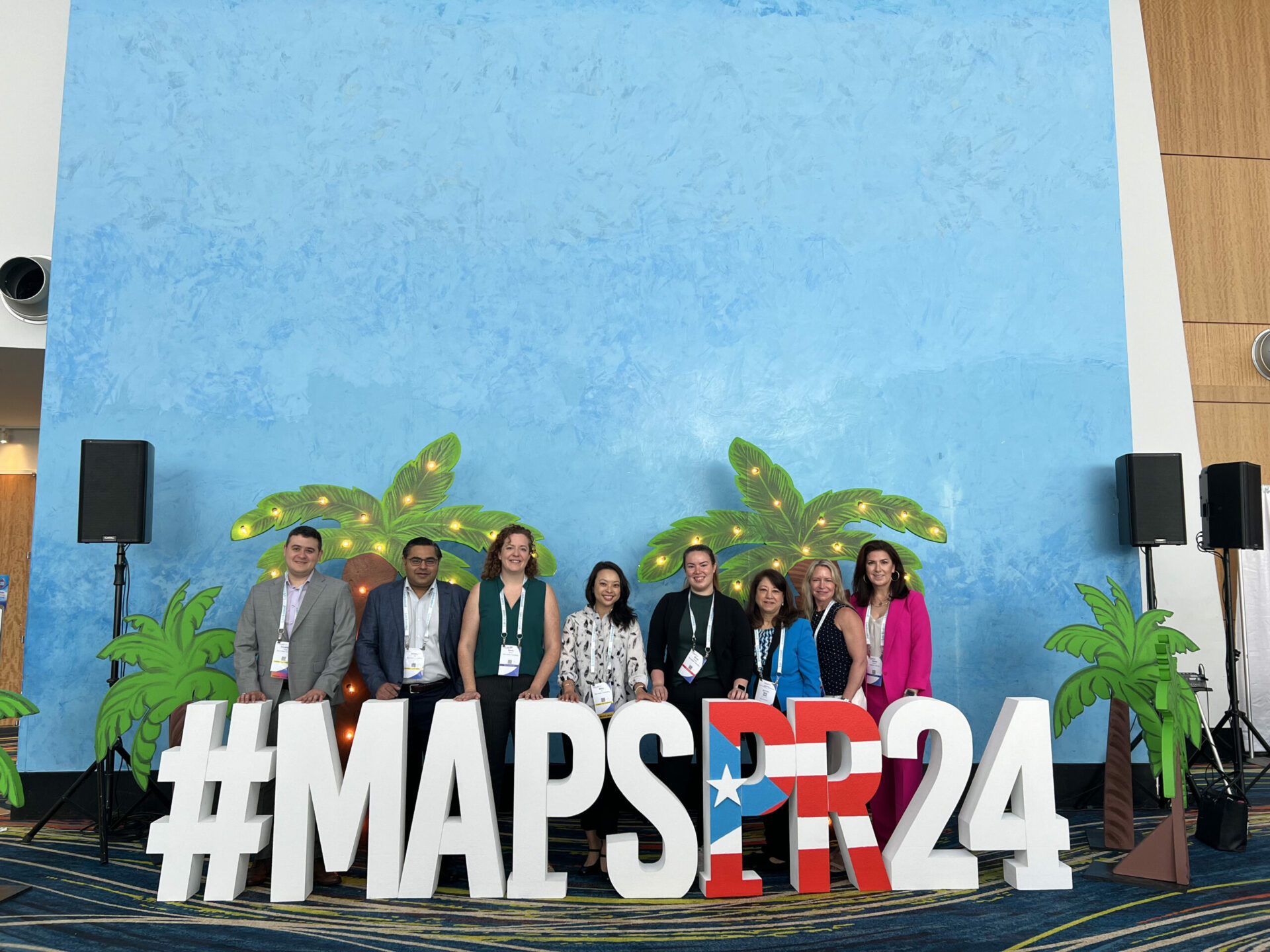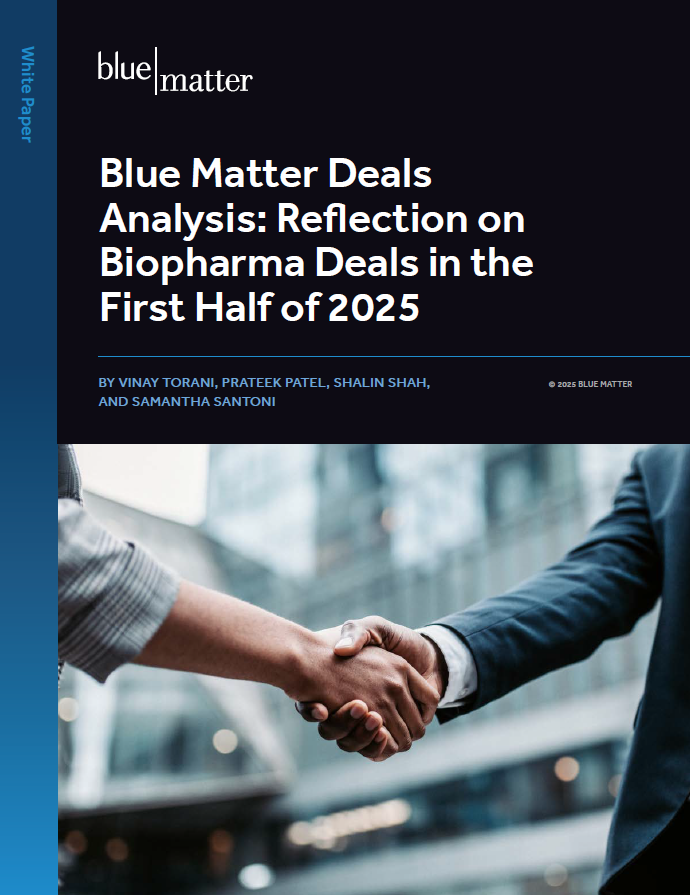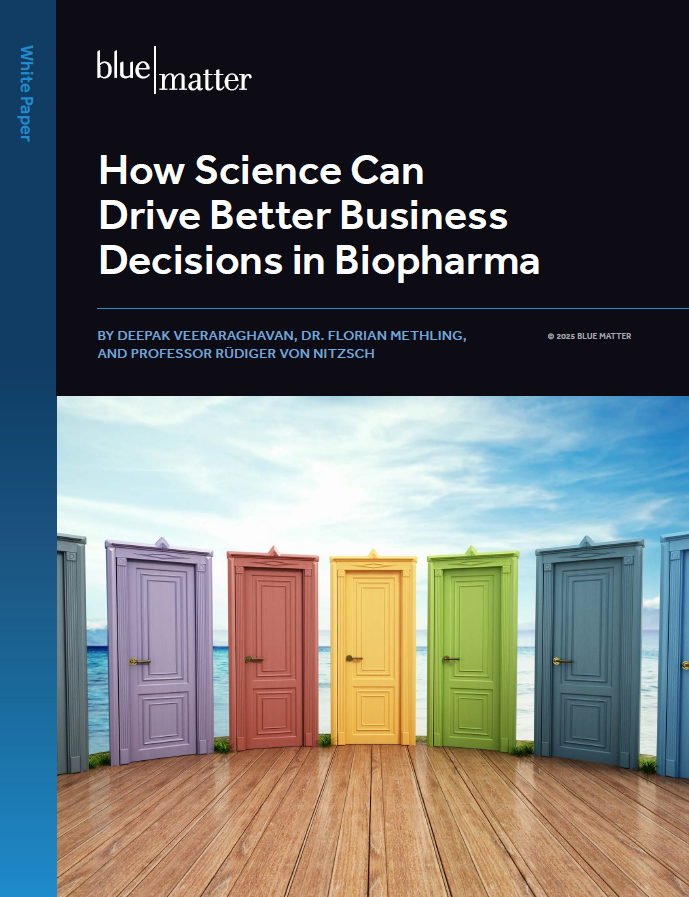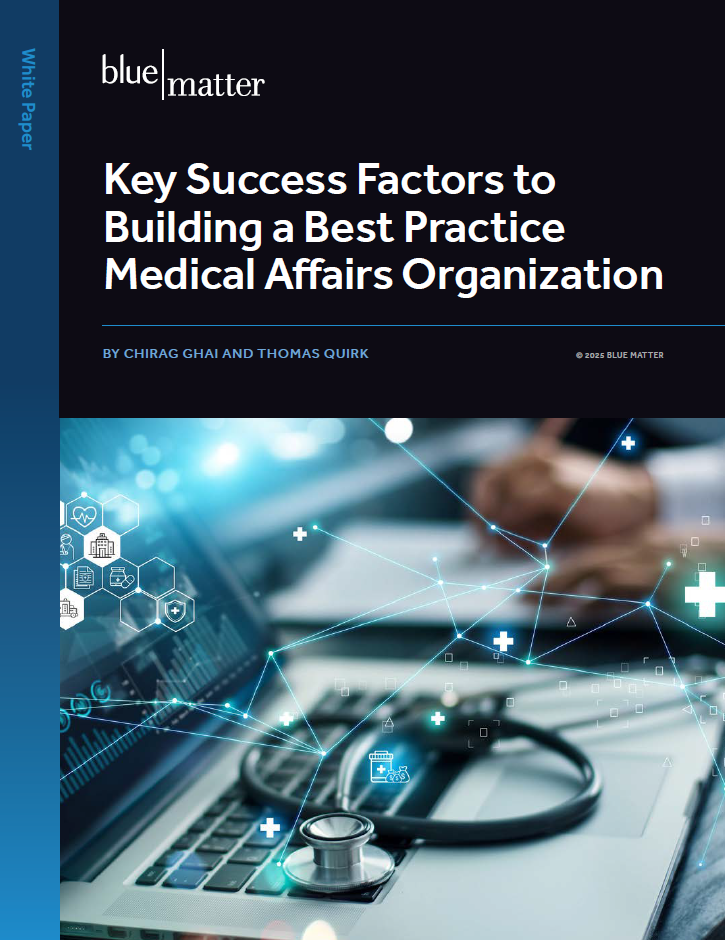
Last week, the Medical Affairs Professional Society (MAPS) held its annual Americas meeting in San Juan, PR (March 24-27). MAPS’ vision is to “improve patient outcomes by maximizing the impact of Medical Affairs” and their annual meetings are usually packed full of useful information and insights. This year, the agenda was focused on actionable ways to innovate within the Medical Affairs (MA) function. As usual, Blue Matter sent a team to attend and see the latest thinking in MA from across the biopharma industry. Of course, given the beautiful weather in Puerto Rico, everyone was anxious to go.
In this article, we share a few key takeaways from the meeting. Appreciating that a single blog article won’t do justice to the breadth and depth of what was discussed, below, we share four key takeaways of what we believe were the most exciting topics.
Takeaway #1 – Digital technology will have increasingly expansive applications for the MA function.
This year’s MAPS conference featured a lot of content on digital technologies and their emerging impact on helping MA teams better identify insights, engage stakeholders, and execute on their core deliverables.
Artificial Intelligence / Machine Learning
One session on artificial intelligence and machine learning (AI/ML) outlined a range of emerging use cases, including:
- Scientific Data Analysis: AI/ML algorithms to process scientific literature, clinical trial data, and real-world evidence to generate hypotheses for future research and evidence generation
- Medical Inquiry Response: AI-powered chatbots and virtual assistants to provide near real-time responses to medical inquiries
- Stakeholder Engagement: ML algorithms that enable personalized engagement; particularly through key opinion leader (KOL) profiling and influence mapping that can improve the impact of medical education and communication efforts
- Sentiment Analysis and Market Insight: AI tools to monitor and analyze social media to gauge the sentiment and perceptions of patients and healthcare providers (HCPs) about specific drugs or treatment approaches
- Predictive Analytics for Patient Support Programs: AI/ML to help design or optimize patient support programs by predicting which interventions are most likely to improve adherence and outcomes for specific patient populations
However, the most critical AI use case in the near-term remains using AI algorithms to address missing data in data sets by imputing values of missing variables, especially for unstructured data attributes. A good example includes Expanded Disability Status Scale (EDSS) scores in multiple sclerosis (MS).
Digital Opinion Leaders
Another session, Putting the DO in DOL: Next-Generation Approaches to Finding and Engaging Digital Opinion Leaders, shared some interesting insights on the topic of digital opinion leaders (DOLs). This was a standing room only event, reflecting the increasing importance of the MA function in engaging opinion leaders via digital channels.
DOLs are individuals (such as HCPs or others) and entities (e.g., societies, patient groups, etc.) that have built significant online followership via social media such as Twitter/X, WhatsApp, and Facebook. DOLs are highly engaged in the scientific landscape, often posting data and sharing opinions about care practices and trends in a therapeutic area-specific fashion.
Via DOLs, MA can gain opportunities to enhance traditional data dissemination efforts via social media and other digital channels. To leverage DOLs effectively, MA teams must be collaborative, tailored, proactive, and impact-oriented:
- Collaborative: identifying and engaging DOLs who are clinically and scientifically credible
- Tailored: Supporting data and other educational content that is focused on the therapeutic area and specific scientific topics
- Proactive: Working closely with legal, compliance, and other functions internally to clarify the intent, content, and purpose of DOL engagements
- Impact-oriented: Objectively measuring impact of engagement via creative and meaningful mechanisms, not just tracking the volume of tweets/re-tweets, but also correlations with face-to-face engagements and other useful metrics
Takeaway #2 – Methods for Including the “Patient’s Voice” continue to improve.
The MAPS conference was also full of conversations about how biopharma companies can better include the patient’s voice during insights gathering. By doing this effectively, companies hope to learn how to support patients better. One interesting session outlined the most pressing challenges biopharma companies face when trying to capture the patient’s voice, as well as potential technology-driven solutions and best practices for doing so.
Key Challenges
Patient insights can be obtained directly through patient interviews, steering committees, advisory boards, partnerships with patient advocacy groups (PAGS), etc. They can also be obtained indirectly by “scraping” information from other sources (e.g. social media). Even with a robust arsenal of techniques for gathering patient perspectives, challenges remain:
- Difficulty in gaining perspectives from the full spectrum of patients – In reality, only a subset of patients is most likely to provide direct input to pharma companies (e.g. they may participate in interviews, fill out surveys or be vocal members of PAGs). Those tend to be the most highly-resourced patients. As a result, there may be entire segments of patients who face barriers to giving feedback. For example, they may be more reserved personalities, or they may face other socioeconomic, geographic, cultural, or disease severity factors that preclude them from giving feedback.
- Trust concerns – Patients have varying perspectives on the trustworthiness of the biopharma industry. Therefore, some are less willing to share their perspectives due to a lack of trust. Building from this, PAGs may have varying levels of interest regarding their engagement with biopharma companies, as well as differing goals in terms of what they want from the engagement. Biopharma companies must manage all these factors as they work to get a true 360-degree view from the patient’s perspective.
- Compliance challenges / maintaining patient anonymity – Compliance concerns often drive biopharma companies to use third parties to mediate conversations with patients, and the boundaries may vary slightly by organizational risk-tolerance. Pre-prescription, it’s even more difficult to engage with patients, although direct-to-patient education may be most insightful at that stage in many cases. Appropriate engagement with patients to gather insights is critical, so open and solution-oriented discussion with legal and compliance teams is critical.
Technology-Driven Solutions
There was considerable discussion regarding technology-driven insights generation from patients. Topics included the use of social media monitoring and AI technologies to improve the efficiency of information gathering. However, these approaches do not necessarily address the challenges above.
For example, AI tools do not have the ability to “gap-fill” for patients who are not already sharing information. For example, patient segments who are less inclined to engage in direct interviews may also be less inclined to post on social media or engage in other forums where their perspectives and stories may be “scraped.” Furthermore, AI solutions may actually increase challenges around trust. It will be important to be transparent about what information can be gathered and how it will be used. Biopharma companies must include patients in the decision-making and provide comfort that there are clear parameters around privacy and its protection.
Digital tools certainly have the potential to improve workflows and decrease the time needed to dig through information. However, effective validation of the insights will still be needed, especially at first.
Thoughts on Best Practices
Group discussions highlighted some best practices for optimally gathering patient insights. The ideas offered mostly centered around successful techniques that the participants had either seen or had helped implement.
Examples included:
Alternative Formats – insights-gathering approaches that go beyond typical interviews and surveys, such as asynchronous formats (e.g. Q&A forums online), allowing patients to respond when it is convenient for them, or video surveys, allowing patients to record answers in short videos (similar to TikTok style). Some of these approaches can bridge barriers by not requiring respondents to type out answers, giving them time to think through their answers, etc. The use of video also allows the biopharma company to get some of the benefits of a face-to-face engagement, such as seeing the patient’s body language
Consistent Input – Internally at Blue Matter, we have also seen the successful use of Patient Steering Committees to provide structured input in a group setting over time. This allows for patients to build on the ideas of other patients, as well as comment on the similarities and differences in their own experiences.
Appropriate Timing – Another best practice relates to timing (which can be disease dependent). For example, newly diagnosed patients may have a different perspective than those later in their journey. In some cases, patients might also need some time to process their diagnosis, so it’s best to respect that and wait before capturing their insights.
“Omni-input” – Finally, some participants outlined the need to use an “omni-input” approach. This approach synthesizes insights from as many sources and relevant stakeholders as possible. For example, perspectives on patients’ unmet needs could come from patients, physicians, nurses, PAs, pharmacists, caregivers, family members, and others. The list of relevant stakeholders will, of course, vary by disease.
With all of the above, it’s still important to understand the limitations. If we only see representation from a subset of patients, then relevant data gaps almost certainly remain. Biopharma companies must work to get as many perspectives as possible, to best serve the full spectrum of patients.
Takeaway #3 – MA is leading the charge in integrated evidence planning.
Much has been written about evidence generation in biopharma, especially related to integrated evidence generation planning (IEGP or IEP). In various sessions that we attended, the rising importance of IEP was a common theme. And while an approach that strategically gathers, aligns, and disseminates medical, health economics, outcomes, access, and other types of data is important throughout the product life cycle, it’s particularly critical leading up to a successful launch.
Across the sessions that we attended, many people remarked that the MA function was taking an increasingly important leadership role in IEP. However, this is not always the case, and a significant amount of variability remains.
Still, the MA function is uniquely positioned to lead IEP within a biopharma company and should be at the center of IEP efforts. Each MA organization should assess its current role in IEP and ensure that it’s helping to efficiently integrate functional needs and efforts across the clinical, medical, commercial, and market access teams (and that such considerations are appropriately factored into MA’s own strategic plans).
Takeaway #4 – MA will have an increasing impact on launch excellence.
One of our team members attended an interesting group discussion on the broad topic of launch excellence. In short, the session
- Looked at past launches to help determine what made the best ones “excellent”
- Identified the key challenges that can affect launch success
- Discussed MA’s role in ensuring launch excellence
Without going into too much detail, one main takeaway is that truly excellent launches (those that experienced steep and sustained uptake and market share attainment that were in line with—or better than—forecasts) were marked with early gathering and use of integrated data across a range of functions (e.g., medical, market access, and so on). This is especially true in today’s environment of payer resource constraints, HCP time limitations, and complex treatments.
It was also noted that few launches are internationally excellent, with most experiencing challenges in at least one geographic market. Plus. It’s very true that a company gets only one shot at an excellent launch: 80% of the time, a new therapy’s trajectory is set by the first 6 months. In cases when the launch didn’t go as planned, the companies found it very difficult to adjust the trajectory after that initial period. A few did, but it took many years to course-correct.
In all the positive cases—which involved either a great launch from the start or a successful course correction—the ability to gather additional evidence and communicate it to stakeholders was crucial to the therapy’s success.
Key Challenges to Launch Success
During the session, participants discussed four main challenges to launch success:
Health System Readiness – This challenge encompasses several barriers, such as increasingly complex patient journeys (and the related additional strain on health systems), limited infrastructure to handle testing, and remaining staffing shortages that can trace back to the COVID pandemic.
HCP Engagement Limitations – This perennial challenge is made even more acute because of an even greater need to educate HCPs on new and complex treatment regimens.
Greater Need for Timely and Compelling Evidence – Economic constraints are leading payers and policy makers to demand more—and more compelling—data. MA should lead the charge for early evidence planning, and the MA team needs to ensure that corporate leaders understand the value of additional evidence and provide the necessary resources to generate it.
Internal Readiness and Strategic Alignment – This challenge is related to the one directly above. While MA should play a key role in early planning, it doesn’t always do so. Even today, too many companies do not have MA involved early enough. In other cases, MA is not in a central planning role, nor does it have the necessary resources.
Medical Affairs’ Role
Even with all the challenges listed above, MA is well positioned to address them. This is because MA:
- Typically understands a variety of key stakeholder needs
- Brings scientific and disease area knowledge
- Can engage stakeholders early
- Is able to generate data to support a range of launch needs and stakeholder engagements
Generating more evidence (particularly RWE) was highlighted as critical to launch success, with MA playing the central role. One key issue that came up, however, is the need for a robust set of key performance indicators to measure MA’s progress and results. This could be a key for unlocking the additional resources MA needs. However, truly objective KPIs are difficult in MA. Whereas commercial teams (for example) can measure sales or market share, MA must use a different set of harder-to-quantify metrics, and most companies haven’t fully figured out how to do that yet.
Parting Thoughts
We hope this short summary was useful and insightful. For a more detailed discussion of many of the topics raised in this article, check out our e-book, Medical Affairs Metamorphosis. As 2024 moves along, we will publish additional materials related to MA and key issues and challenges. Please follow us on LinkedIn or check our blog frequently to stay up to date.









